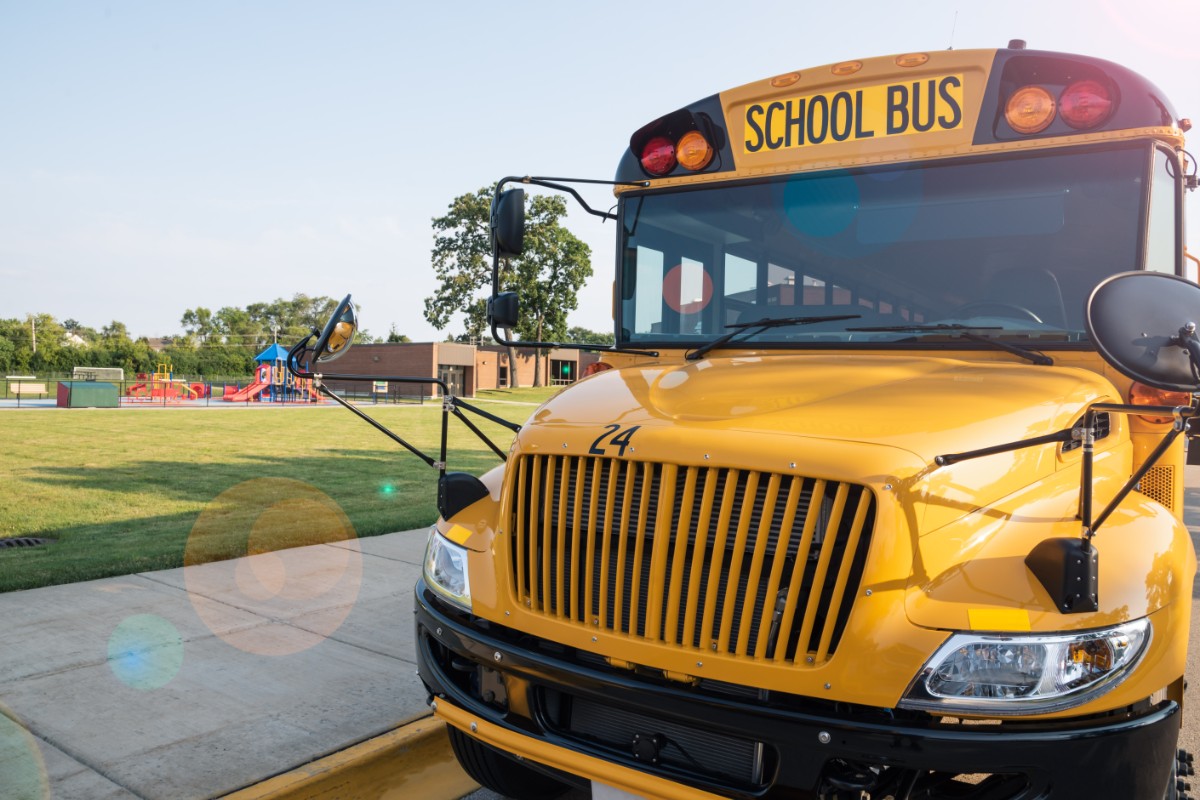More California schools are switching to electric-powered school buses than any other state, according to a new report from CALSTART, a nonprofit consortium that advocates for efficient and clean high-tech transportation.
A combination of federal, state and local funding opportunities has led to a significant increase in electric school bus adoption in states including Illinois, New Jersey, North Carolina, Connecticut and New York, researchers found. California, however, continues to lead the way with the most electric school buses adopted, making up 56 percent of the total market share.
State funding programs and policies are playing a major role in local educational agencies’ ability to make the switch to electric buses, and California schools have greatly benefited from strong governmental support in school bus transition.
“The road to a 100 percent zero-emissions future requires bringing school buses on board with the vision of a California with clean air,” said Steven Cliff, California Air Resources Board executive officer. “Through incentive programs and grants, California has invested over $1.5 billion to fund the transition toward zero-emission school buses, which in turn helps to create healthier communities for our children.”
Through the federal Bipartisan Infrastructure Law, the Environmental Protection Agency’s Clean School Bus Program will provide $5 billion over fiscal years 2022–26 for the replacement of existing school buses with low- and zero-emission school buses to help improve student and driver well-being, and promote cleaner air for all.
While the 2022 Clean School Bus Rebate Program is now closed, the EPA has opened new Clean School Bus (CBS) program grants funding opportunities. EPA anticipates awarding approximately $400 million in competitive grant funding under the CBS Grants Program Notice of Funding Opportunity (NOFO). The program is soliciting applications nationwide for a grant competition to fund the replacement of existing school buses with clean and zero-emission school buses. Applications need to be submitted electronically to EPA through Grants.gov no later than Aug. 22, 2023, at 11:59 p.m. (ET) to be considered for funding.
Yet despite additional federal and state support, the report found school districts are seeking alternative financing opportunities as a way to address the high upfront cost of electric school buses.
“Despite some of the barriers to adoption, such as the upfront cost, school districts have more support available to them than ever to help ease the transition to electric school buses,” said Rachel Chard, national program manager, Electric School Buses for CALSTART. “It’s clear from the data that school districts are eager to electrify with increases in adoption and program participation happening across the U.S.”
Researchers highlighted in the report several unique financing models for electric school bus purchases that have potential to make them more affordable and accessible to LEAs. “These models can help overcome the upfront cost barrier that often prevents schools from adopting these vehicles by providing low-interest loans or other financing options. Some financing models can also provide additional benefits to school districts, such as charging management and training services,” they wrote.





